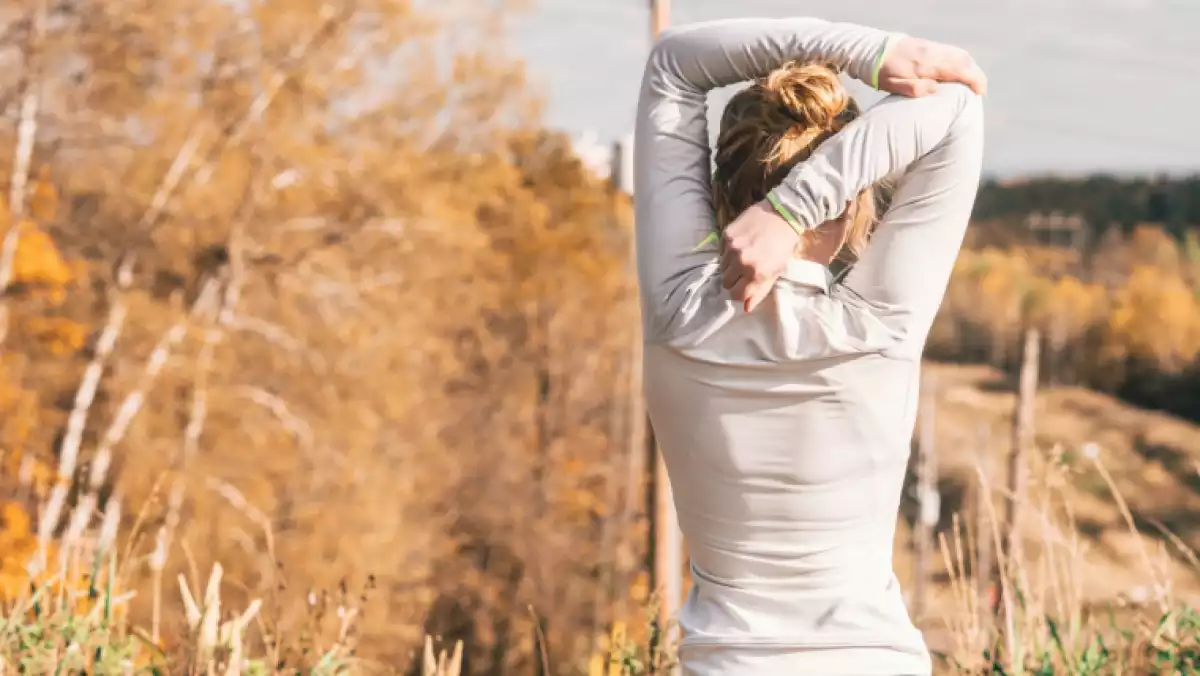Back exercises are almost always necessary to rehabilitate the spine and relieve back pain. Exercising in a gradual and controlled manner is usually the best method to alleviate and prevent back pain. While it is true that when we suffer acute back pain, such as lower back pain, we usually stay in bed and stop all physical activity, resting for more than a day or two, however, it can stop the recovery and worsen the pain. To prevent and cure back pain, we suggest a series of home back workouts and stretches for the upper, middle and lower back.
Benefits of back workouts
When we perform controlled and progressive back exercises to relieve back pain, we obtain many benefits. It is essential to do them correctly to avoid getting injured. Consistently working out helps cure and prevent back pain and strengthens the back muscles eliminating pressure in the disks of the spine and the facet joints. Doing back workouts also relieves stiffness and improves mobility.
This helps us prevent possible injuries. Besides, it minimizes the frequency of back or neck pain and reduces the intensity of pain when it does occur. When we perform physical exercise, our bodies release endorphins, hormones that naturally relieve pain. A frequent release of endorphins can help reduce dependence on prescription treatment for back pain. Endorphins can also elevate mood and relieve depressive symptoms, a common effect of chronic pain.
Back exercises improve circulation, in such a way that the nutrients travel better through the body, reaching the spinal discs and improving their health. A balanced and complete workout for the back should include a combination of stretching and strengthening, as well as aerobic exercises that raise the heart rate.

Upper back workouts
The upper part of our spine is supported by the muscles of our shoulders, neck, chest, and back. By strengthening these muscles through exercise, we can avoid pain problems in the neck and upper back.
Performing regular exercises for the back can help our muscles to be stronger and more able to support the spine without complications. Discover five activities for the upper back that you should do in sessions of 15 to 30 minutes a day, at least two or three times a week.
1. Stretch your arm
Get on all fours, with your neck parallel to the ground. Raise one hand and stretch your arm in front of you, parallel to the ground, being careful not to raise your head. We hold for 5 seconds; then we put our hands back on the ground. Perform between five and ten repetitions, then change the arm and repeat all the previous steps.
2. Thoracic extension
While sitting on the edge of a chair, put your hands behind your head and gently arch your back until you are facing the ceiling. Repeat ten times.
3. Slide your arms
Stand with your back against a wall, elbows, and wrists against the wall as well. Slowly slide your arms up as high as you can, keeping your elbows and wrists against the wall; then return to the original position. Repeat ten times.
4. Butterfly
Place the palms of your hands on the corresponding shoulder. Keep your hands in place and join your elbows until you feel a stretch in your upper back. Hold the position for 5 seconds, then return to the starting position. Repeat ten times.
5. Shoulder rotation
Slowly move your shoulders forward, making large circles. Reduce to smaller circles, then reverse the direction. Repeat ten times.

Middle back workouts
Sitting all day in front of a desk is one of the leading causes of back pain in the middle area. The best remedy to relieve back pain is to perform elongating movements that lengthen the spine. Below we introduce five exercises for the middle back that are ideal to do at home at any time of the day and thus relieve the tension in your middle back.
1. Cat-cow movements
Get on all fours, wrists under your shoulders and knees under our hips. Inhale, gently moving the pelvis up, chest forward, and face up. Exhale and arch your back like a cat, rounding the spine, inserting the pelvis and letting the head hang low. Repeat 5 to 7 times.
2. Elevation
Wrap a blanket, a towel or a yoga mat and place it on the floor. Place the roll under your lower part of your shoulder blades near the middle of the back. Relax and take long, deep breaths.
3. Seated turn
Sit on a chair with your legs crossed. Place your right hand behind you, bringing your left hand to your right knee. Gently turn your chest to the right and feel the lengthening through the spine, allowing the twist to relieve the tension in the center of the back. Look over your right shoulder as far as your neck allows. Hold 3 to 5 breaths and return to the starting position. Repeat on the other side.
4. Cobra
Lie face down, with your chin on the mat. Place your hands under your chest. Lift your torso off the floor, pressing on the muscles of your back. Hold two breaths and return to the starting position. Repeat two more times.
5. Bridge
Lie on your back and bend your knees. Press your feet into the floor and raise your hips. Take your hands and place them under your back, pressing your arms and feet to lift your hips gently upwards. Hold between five and seven breaths and return to the starting position. Repeat three times.
Lower back workouts
Weak muscles, especially those in the hip and pelvis, can sometimes cause back pain, injury or lower back pain. Lower back pain can interfere with our daily activities, but it has been shown that strengthening exercises can reduce pain and increase the strength of these muscles. Living a healthy lifestyle is the best remedy to prevent back pain, maintain a balanced weight, increase muscle strength and resistance and avoid activities that are harmful to the lower back.
1. Bridge
Lie down with your feet resting on the floor, hips wide. With your hands by your sides, press your feet against the ground while you slowly raise your buttocks from the ground until your body is in a straight line. Keep your shoulders on the ground. Repeat three times.
2. Deep breathing
Lie down with your feet resting on the floor, hips wide. Relax your hands to the sides and inhale deeply. Exhale and press the navel towards the spine, engaging the abdominal muscles without moving the hips. Hold for 5 seconds and repeat five times.
3. Lateral leg lift
Lie on one side, keeping your leg slightly bent on the floor. Raise your thigh without moving the rest of your body. Hold the lifted leg for 2 seconds. Repeat ten times and then change sides.
4. Superman
Lie on your stomach with your arms extended outward. Lift your hands and feet off the floor until you feel a contraction in your lower back. Make sure you look at the ground during this exercise to avoid tension in the neck. Hold the posture for 2 seconds and then return to the starting position. Repeat ten times.
5. Partial curls
Lie on the ground with your feet resting on the floor, keeping your knees bent. Cross your hands on your chest. Take a deep breath. While exhaling, strengthen your abdominals by pressing the belly button towards the spine. Slowly raise the shoulders a few centimeters off the floor. Return to the starting position and repeat ten times.
- This article about "Back Workouts" was originally published in Spanish in Onda Salud
References:
Bumbiedro, S. A., & Pérez, F. G. (2003). Importancia del ejercicio físico en el tratamiento del dolor lumbar inespecífico. Rehabilitación: Revista de la Sociedad Española de Rehabilitación y Medicina Física, 37(6), 323-332.
González Montesinos, J. L., Martínez González, J., Mora Vicente, J., Salto Chamorro, G., & Álvarez Fernández, E. (2004). El dolor de espalda y los desequilibrios musculares.
Vásquez-Ríos, J. R., & Nava-Bringas, T. I. (2014). Ejercicios de estabilización lumbar. Cirugía y Cirujanos, 82(3).

